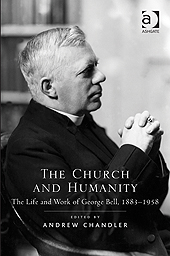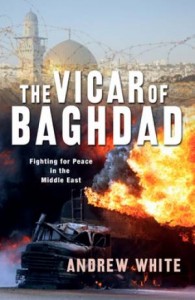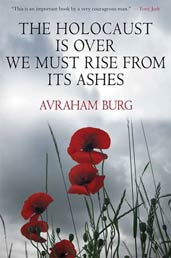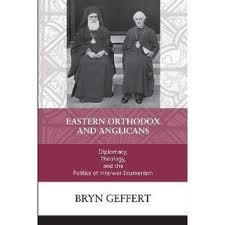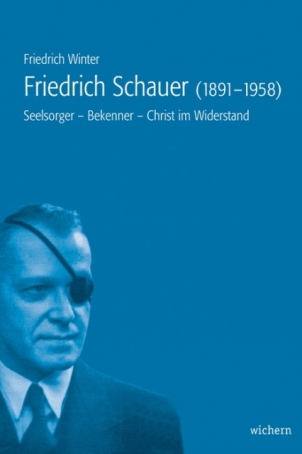Contemporary Church History Quarterly
Volume 19, Number 1 (March 2013)
Editorial: Pope Benedict XVI: The Humble servant of the Lord, or God’s Policeman?
By John S. Conway, University of British Columbia
The sudden and totally unexpected announcement on Monday 10 February that Pope Benedict XVI was intending to retire caught everyone by surprise. It has caused a flurry of speculation ever since. But this breach with the past, as the first Pope to resign the Chair of St Peter for six hundred years, prompts us to examine the career of this pontiff over the past eight years, and to assess his place in the wider history of the Papacy.
Joseph Ratzinger was born in 1927 in a staunchly Catholic family in a small town in rural Bavaria. This was a part of Germany which had endured much persecution during the period of Bismarck’s Kulturkampf, when Catholic life had been safeguarded and fostered by a very active flourishing of pilgrimages, worship at shrines, way-side crucifixes and votif-churches. These had formed a valued defence against the onslaughts of anti-Catholic forces, and were to prove to be of value again when the same persecution was resumed under the Nazis. The Ratzinger family took a reserved attitude towards Hitler’s rise to power in 1933, which later became more hostile when radical Nazis began to encroach on Catholic life and impose restrictions on Catholic organizations. For instance, in 1939, all Catholic youth organizations were banned and all young Germans were obliged to join the Hitler Youth movement, though it seems that Josef managed to evade attending many of the sessions. However, in 1943, when he was still only 15, he was conscripted to serve in the Airforce Auxiliary, which involved guard duty around endangered factories near Munich. In the following year he was obliged to join the Reich Labour Force, but in a non-combatant role.
Shortly after his eighteenth birthday in April 1945, the Third Reich was overthrown, and he became a prisoner held by the American occupation troops for some three months. It was then that he, like many other Germans, first learnt of the atrocities committed by the Nazis in the concentration camps. This led to a lifelong sense of shame at what misdeeds had been carried out in Germany’s name. From then on, he recognized the need for repentance and atonement, particularly for the sufferings of the victims of the Holocaust.
In January 1946 he and his older brother George were allowed to begin their training for the priesthood in the diocesan seminary near Munich. But a year later he was promoted to the Faculty of Theology at Munich University, still being rebuilt after the war. In 1951 both brothers were ordained, and Josef served a short time as a curate in a down-town parish in Munich city. But in 1952 he was recalled to the seminary and asked to teach dogmatic and fundamental theology, which remained his interest thereafter. In 1959 he was promoted to the Faculty of Theology at Bonn University in the heart of the Catholic Rhineland, and subsequently became Dean of the Faculty at Munster in north Germany. In 1966 he was invited, at the suggestion of his colleague Hans Kung, to move to the venerable university of Tubingen, but then three years later preferred to return to Regensburg in his native Bavaria.
It was during this period that he was summonned to be an advisor to Cardinal Frings of Cologne at the Second Vatican Council, and subsequently a member of the International Theological Commission. At first he shared much of the excitement at the new ideas which the Council produced, but subsequently became alarmed by what he believed were the prevalence of humanistic notions, which obscured the orthodox traditions of the Catholic faith. Thus he welcomed the reform of the Catholic liturgy including the introduction of the vernacular for the Mass, but deplored what seemed to him to be the loss of the sense of transcendence.
In May 1977 he was appointed Archbishop of Munich, and a month later was made a Cardinal. He was obviously regarded as a steady hand, who would keep in check some of the more turbulent hotheads even among the clergy, while opening up new avenues for spiritual formation which had been abandoned during the Council’s repercussions. A year later he was summoned to Rome twice to take part in the Conclaves which elected both John Paul I and John Paul 11. The latter Pope soon found that Ratzinger would make an excellent working partner, and in 1981 called him back to Rome to become the Prefect of the Congregation for the Doctrine of the Faith. This is one of the more important of the Vatican’s positions, since it entails making sure that bishops and priests are upholding the Church’s traditions in their sermons and writings. The office is committed to maintaining the orthodoxy of Catholic traditions, and ensuring that the Church in all parts of the world is keeping in step with each other and with the Pope as its spiritual head in Rome. Formerly this office was called the Holy Inquisition, and had an evil reputation. But in the past century its function is limited “to promote sound doctrine, to correct errors, and to guide back to the right path those who are in error.” The office has no physical or disciplinary powers, no police force, and needless to say no jails. All it can do is to appeal to the bishops to call any alleged offender to heel. Ultimately, it has no weapons besides argument and appeals to the faith.
Necessarily, such an office, and such a function, however gently exercised is bound to seem repressive. Ratzinger’s authority appeared to be too conservative to the more liberal or radical thinkers in the Catholic ranks. Hence he gained the description of being God’s policeman. His first controversy came with the liberation theologian from Brazil Leonardo Boff, who ardently championed the so-called Liberation Theology, which made extensive use of Marxist theory. He was called to Rome and urged to keep silent – a reproach which many of his followers resented. So too some of the more controversial issues affecting the church, such as celibacy of priests, the ordination of women, abortion, papal dogma and homosexuality, soon enough came to rest on Ratzinger’s desk. Frequently the critics believed that their views would have prevailed if only God’s policeman had not suppressed them. But he made clear that Church doctrine was not something which could be altered to suit any one’s special interests or wishes. The Church did not and does not exist as a kind of self-service supermarket for the purpose of self-realization. Ratzinger’s task was to ensure that this truth was upheld.
In some ways, he was a perfect foil to Pope John Paul II, whose charismatic personality, especially in the early years of his reign, proved most appealing.The Pope from Poland had an uncomplicated human directness, openness and warmth, which made him immediately likeable. By contrast, Ratzinger was far more reserved, studious, careful in his speech, and not at all gregarious. The media played up this difference, depicting John Paul in the star role, while his right-hand man could be depicted as a cold, repressive and conservative German. The fact is, however, that for twenty-three years the two worked in close harmony. On several occasions, as he grew older, Ratzinger begged John Paul to allow him to retire. He hoped to be able to return to Bavaria, and to share his house there with his brother who had been the conductor of the famous Cathedral Choir in Regensburg. But John Paul would not permit this, so he was obliged to soldier on. If, one the one hand, this lengthy period of office enhanced his authority, it also gave rise to increased criticism from those who believed the Church was caught up into an inflexible, or outdated, pattern of operation. Particularly in Germany, the media and much of the avant-garde intelligentsia regarded the Church as having failed to seize the opportunities for complete reform after the Second Vatican Council, or were increasingly hostile to any form of transcendent belief. Even some German Catholics were notoriously critical of the Pope and opposed to Rome. These were burdens which Ratzinger had to bear.
In April 2005 Pope John Paul II died. By this time Ratzinger had become Dean of the Cardinals, and hence was responsible for both the funeral and for the organization of the subsequent conclave to elect a successor. In his funeral sermon he gave his listeners a sharp warning against relativism and ideological fads, when nothing was recognized as having ultimate value, and the only final standard was the individual and his wishes. A faith that follows the movements of fashion and of the latest novelties, he observed, is not a constructive attitude. Instead a mature faith is one that is deeply rooted in friendship with Christ.
On 19 April, on the third ballot in the Conclave, Joseph Ratzinger was elected Pope, and took the name Benedict XV1. The choice was momentous in several ways. Firstly, he was only the second non-Italian after 500 years to hold this office. Secondly, the choice of a German Pope after an even longer period marked a significant change and rehabilitation in Germany’s international status. No longer would the awful shadow of Hitler’s misdeeds be attributable to the whole nation. Thirdly, he had only three days before celebrated his 78th birthday. There could be no danger that his reign would last as long as John Paul II’s. He was not going to rival John Paul’s journeys around the world, visiting 129 countries and making 2500 speeches. His would be a more low-key modest reign, similar to his personal disposition. Where John Paul had sought to bring the Church to the world in large-scale personal appearances, Benedict would concentrate on the message, on the need to return to the essential revitalization of what is intrinsic to the Church’s commission, to the way Christ intended the Church to be.
Of course Benedict was well enough aware that he would be obliged to deal with a whole range of problems left over from the previous reign. John Paul’s well-publicized appeals against exploitation, oppression and poverty had brought headlines, but little obedience from even the faithful. And, on a number of important questions regarding the future of the world, the Catholic Church seemed to have missed the boat. Particularly on such issues as abortion, the rights of women in the Church, or the prohibition of contraception and euthanasia, the Church’s stance was horribly compromised by the seemingly unstoppable scandals of clerical sexual aberrations in different parts of the Catholic world, including Canada. People’s confidence in the institutional Church was waning year after year, when such matters seemed to be pushed under the rug. Even more damaging was the unverified rumour that Benedict and his advisors downplayed these scandals by implying that they were being drummed up by sensational journalists or greedy lawyers.
On the other hand, Benedict took office with certain clear advantages. His unusually long term of service at the highest rank of the Vatican bureaucracy meant that he was thoroughly familiar with the problems to be faced. He was better known to the five thousand bishops of the world church than any of his predecessors, and they in turn understood his theological authority and the directions he would give them in church politics. He had had years of pondering the great issues of faith and reason, or the ethical limits of modern science. His calm, persistent and logical way of working meant that he had thought out the implications of decisions in advance. He knew what was required, and if necessary could launch the kind of steps to deal with situations. Above all, he knew what it meant to be a Pope and what is expected of him. Thus although many observers wrote him off as another elderly interim Pope, Benedict XVI was ready to take up the reins of office, and give effect to his long-held convictions.
Benedict’s elevation to the Papal throne necessarily meant that he left the prefecture of the Doctrine of the Faith. The result was an almost visible lightening of his personality. Instead of the harsh disciplinarian, he now appeared as a more gentle and approachable leader. And it was notable that the criticisms of the media became more tolerant. Whereas for years the prevalent ideology had poured scorn on everything to do with Christian belief, Benedict’s thoughtful pronouncements of the subject of faith and reason recreated a new dialogue between culture and religion, which has helped many to recognize the validity of his arguments. His papacy has shown that his challenge has been understood, and he has succeeded in upholding an alternative model of Christian existence which rejects the individualism and relativism so widespread in late 20th century cultures. In this role, Benedict became a voice of conscience, summoning the faithful to be obedient to their traditions and loyal to their ideals. The predictions of some hostile critics that this aged, scholarly, conservative, uncharismatic Bavarian would only hasten the dechristianization of Europe have been confounded. Moreover, thanks to his highly efficient use of his time, he has been able to turn back to his first love – biblical studies. His recently published three volumes on Jesus are a valuable summary of other men’s researches, but capped with the authority of someone who had reflected on these issues for many decades.
Speculating about the Conclave and the choice to be made by the 117 Cardinals entitled to vote would be risky. But, just because Benedict’s resignation was so unexpected, even by his closest colleagues in the Vatican, so there was none of the usual speculation about the succession, as happened last time during the long-drawn-out decline of Pope John Paul II. Just for that reason, virtually nothing is known about the most likely candidates, whose biographies will now have to be rapidly researched. More significantly, the choice will surely rest on other factors, even if the traditional Catholic belief is that the Holy Spirit will make the decision. For one thing, will there be pressure to revert to an Italian Pope? Or alternatively has the time come for a non-European candidate to be selected? Equally important is the question of qualifications. Many Popes have served in the Vatican bureaucracy, known as the Curia, often with distinction in high office, though few have been so enduring as Benedict with his nearly 24 years at the head of the Congregation for the Doctrine of the Faith. The alternative would be to select a man who had held pastoral office as Archbishop or Cardinal in some distant See. In fact, we can discern a pattern here. Over the past fifty years, Pius XII was a Curial diplomat, but John XXIII a well-beloved pastor. Paul VI had also served in the Vatican’s State Department, but neither John Paul I nor II had any such experience. Following Benedict’s tight control from the centre, perhaps the time has come to choose an outsider, with a different perspective, even from a different continent.
When the Conclave is summoned, the cardinals will have to hurry to Rome , presumably this time by air, along with their attendants, and will be suitably housed for the duration. All will agree that it would be unseemly for the Conclave to be still continuing by the time Holy Week begins, i.e. on March 24th, so that the newly-elected Pope can preside over the Church’s most solemn and significant rituals culminating with Good Friday’s Three Hour penitential Mass, and the triumphant Resurrection service on Easter morning. The Cardinals’ deliberations will therefore have not to be too long drawn out. But the preliminary meetings with their colleagues over dinners, the late-hour chats, the consultations in the various national colleges or with friends in high offices, are all part of the process to determine who is the most suitable choice. Many of the Cardinals will arrive with their own strong ideas about the future of the church, but will have to adjust these in order to reach a consensus on a single candidate. The secrecy with which the whole procedure is surrounded means that we may never know the exact reasons why the next Pope is chosen. And we would do well to be sceptical about the large number of Pope-watchers who are even now flocking to Rome to offer the public throughout the world their unrivalled but uniformed guesses.
Pope Benedict’s legacy will certainly be disputed in the years ahead. His critics, especially in the United States, will lay stress on the shortcomings of his failure to deal more trenchantly with the sex scandals affecting priests and bishops, or the seeming insensitivity towards their victims. Other critics, more aptly, point to Benedict’s rigid stance against all proposals for change as refusing to recognize the need for internal reform in order to pave the way for true renewal. As Cardinal Avery Dulles pointed out, such an attitude turns the church into an obstacle rather than an inspiration to faith. Benedict’s admirers, on the other hand, will point to his years of devoted service in an office which he held with great dignity, insight and perseverance. His example of a teaching papacy, and his legacy of theological writings, will be long remembered. His eight years as Supreme Pontiff were short and lacking in any historic turning points. But he can surely be given credit for the manner in which he broke the tradition of centuries and decided to retire. It will be a pity if Benedict’s pontificate becomes best remembered for his manner of leaving it. Yet, we have no reason to suspect that this Pope emeritus in his retirement will seek to exercise power or influence from behind the scenes. Instead we can wish him a peaceful and fruitful period when he may be able to enrich us with further insights into the rich heritage of Christian thought, of which he was for so many years the guardian and expositor.
 The record of the German Evangelical Churches, including the Confessing Church of Karl Barth and Dietrich Bonhoeffer, in failing to mobilize opposition to the Nazis’ violent attacks on the Jews is a shameful one. It has been excellently researched in the recent book by Robert Ericksen, Complicity in the Holocaust: Churches and Universities in Nazi Germany. In the post-1945 period, when the horrifying facts of the Holocaust were revealed, the Church was overwhelmed with a deep feeling of guilty shame. The subject was to be avoided. It took many years before the details emerged of one of the more significant, if belated, efforts in the Protestant ranks, namely the establishment in 1938 of an office to assist the persecuted Protestant victims of Nazi oppression. Hartmut Ludwig’s contribution in retelling the story of the “Büro Grüber” is therefore much to be welcomed.
The record of the German Evangelical Churches, including the Confessing Church of Karl Barth and Dietrich Bonhoeffer, in failing to mobilize opposition to the Nazis’ violent attacks on the Jews is a shameful one. It has been excellently researched in the recent book by Robert Ericksen, Complicity in the Holocaust: Churches and Universities in Nazi Germany. In the post-1945 period, when the horrifying facts of the Holocaust were revealed, the Church was overwhelmed with a deep feeling of guilty shame. The subject was to be avoided. It took many years before the details emerged of one of the more significant, if belated, efforts in the Protestant ranks, namely the establishment in 1938 of an office to assist the persecuted Protestant victims of Nazi oppression. Hartmut Ludwig’s contribution in retelling the story of the “Büro Grüber” is therefore much to be welcomed.
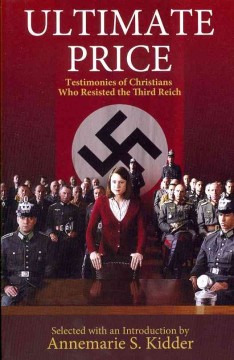 This short selection of texts written by seven notable Germans who resisted the Nazi onslaught against their Christian faith will be a helpful introduction for beginners in this field. While the testimonies of Dietrich Bonhoeffer have been known in English translation for many years, it is good to have these brief and excellently translated extracts from the writings of lesser known figures, such as Sophie Scholl, the Munich student executed for her protests against Nazi totalitarianism, or of Jochen Klepper, the well-known novelist, who committed suicide with his Jewish wife in 1942. On the Catholic side, the Jesuit Father Alfred Delp was also executed for his involvement with the July 1944 plot to overthrow Hitler. His prison letters are, like Bonhoeffer’s, an inspiring witness to his enduring faith. Less known to English-speaking readers will be the testimony of Franz Jägerstätter, the Austrian farmer, executed for his refusal to serve in Hitler’s army, or the courageous stand of the Berlin Cathedral Provost, Bernhard Lichtenberg, who prayed publicly for the persecuted Jews and for the prisoners in concentration camps, for which he was arrested and sent to prison. The only survivor, the Jesuit Father Rupert Mayer, was already arrested in 1937 for his provocative sermons critical of the regime. His refusal to be silenced led to his being imprisoned again in 1938, and then to being placed under house arrest in a distant monastery in 1940. The common theme of all these witnesses was their determination to protest against the injustices of the Nazi regime, even though their motives for doing so varied widely. They were all well aware of their isolation in adopting such views, but were resolved to defend the integrity of their Christian beliefs. Their readiness to challenge the majority’s obeisance, gullibility or fearfulness is what makes these testimonies so compelling. This little book will undoubtedly help to uphold their memory among a wider public, in the hope that their sacrifices will resonate far beyond their own times or their original homeland.
This short selection of texts written by seven notable Germans who resisted the Nazi onslaught against their Christian faith will be a helpful introduction for beginners in this field. While the testimonies of Dietrich Bonhoeffer have been known in English translation for many years, it is good to have these brief and excellently translated extracts from the writings of lesser known figures, such as Sophie Scholl, the Munich student executed for her protests against Nazi totalitarianism, or of Jochen Klepper, the well-known novelist, who committed suicide with his Jewish wife in 1942. On the Catholic side, the Jesuit Father Alfred Delp was also executed for his involvement with the July 1944 plot to overthrow Hitler. His prison letters are, like Bonhoeffer’s, an inspiring witness to his enduring faith. Less known to English-speaking readers will be the testimony of Franz Jägerstätter, the Austrian farmer, executed for his refusal to serve in Hitler’s army, or the courageous stand of the Berlin Cathedral Provost, Bernhard Lichtenberg, who prayed publicly for the persecuted Jews and for the prisoners in concentration camps, for which he was arrested and sent to prison. The only survivor, the Jesuit Father Rupert Mayer, was already arrested in 1937 for his provocative sermons critical of the regime. His refusal to be silenced led to his being imprisoned again in 1938, and then to being placed under house arrest in a distant monastery in 1940. The common theme of all these witnesses was their determination to protest against the injustices of the Nazi regime, even though their motives for doing so varied widely. They were all well aware of their isolation in adopting such views, but were resolved to defend the integrity of their Christian beliefs. Their readiness to challenge the majority’s obeisance, gullibility or fearfulness is what makes these testimonies so compelling. This little book will undoubtedly help to uphold their memory among a wider public, in the hope that their sacrifices will resonate far beyond their own times or their original homeland.